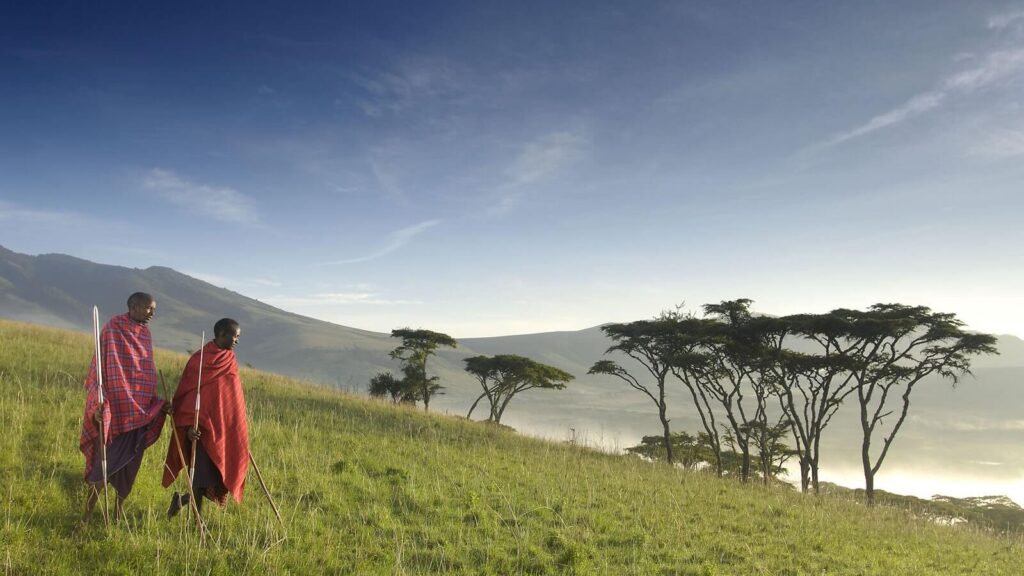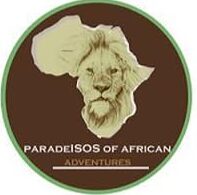Ngorongoro Crater is a massive volcanic caldera, formed approximately 2.5 million years ago when a giant volcano exploded and collapsed on itself. It is the largest intact and unfilled caldera on Earth, spanning about 20 kilometers (12 miles) in diameter and plunging 600 meters (about 2,000 feet) deep.
The crater is part of the larger Ngorongoro Conservation Area, a UNESCO World Heritage Site, which blends wildlife conservation with human habitation. Within the crater’s lush expanse lies a self-contained ecosystem teeming with wildlife, including lions, elephants, zebras, wildebeest, hippos, hyenas, and the critically endangered black rhino.
A striking feature of the crater is its diverse habitats: grassy plains, acacia woodlands, swamps, and the shallow Lake Magadi, which often shimmers pink from thousands of flamingos. The crater floor is a microcosm of East African wildlife, offering safari-goers a chance to witness the “Big Five” in a relatively small area.
The surrounding crater rim is cloaked in misty forests, home to leopards and buffalo, and offers panoramic views that are breathtaking at sunrise and sunset. Maasai pastoralists still live and graze their cattle around the area, adding a rich cultural dimension to the landscape.

Animals You Can See
Big Five: Lion, Leopard, Elephant, Rhino, and Buffalo. Ngorongoro is one of the best places in Africa to spot the endangered black rhino, making it a prime location for Big Five safaris.
Lions: Home to one of the densest lion populations in Africa, lions here are often seen lounging in the open grasslands or stalking prey.
Elephants: Mainly older bull elephants with impressive, long tusks roam the crater floor, often seen near water sources or under acacia trees.
Wildebeest & Zebras: Huge herds of wildebeest and zebra migrate through the area, creating an iconic safari scene and supporting the predator populations.
Hippos: These massive creatures are commonly found wallowing in the crater’s freshwater pools and swamps, especially during the heat of the day.
Hyenas & Jackals: Spotted hyenas and golden jackals are frequent sights, playing vital roles as both predators and scavengers in the ecosystem.
Birdlife: A birdwatcher’s paradise, with over 500 recorded species. Look out for vibrant flamingos lining the soda lake, towering ostriches striding across the plains, and raptors soaring above the crater rim.

🏞️ What is the Ngorongoro Crater?
The Ngorongoro Crater is the largest intact, inactive, and unfilled volcanic caldera in the world.
Located in northern Tanzania, it’s part of the larger Ngorongoro Conservation Area, a UNESCO World Heritage Site.
The crater was formed about 2-3 million years ago when a giant volcano exploded and collapsed on itself.
📏 Size and Geography
Diameter: Around 19 km (12 miles) wide
Area: About 260 square km (100 square miles)
Depth: Approximately 610 meters (2,000 feet)
It’s a lush, self-contained ecosystem—almost like a wildlife paradise in a bowl!
🐘 Wildlife
The crater is famous for its incredible density and variety of animals, including:
Big Five: Lion, leopard, elephant, buffalo, and black rhino (Ngorongoro is one of the best places to spot the endangered black rhino)
Other Animals: Wildebeest, zebra, hyena, gazelle, warthog, hippos, flamingos, and more
Over 500 bird species have been recorded
Animals rarely leave the crater due to its rich resources and permanent water supply.
🌋 Geology and Formation
The Ngorongoro Crater is what’s left after a massive supervolcano (possibly as high as Kilimanjaro) erupted and collapsed inward.
Its floor is a mix of savanna, forest, and lakes, supporting a wide variety of ecosystems.
🏛️ Cultural Significance
The area is home to the Maasai people, who have coexisted with wildlife here for generations.
It also contains Olduvai Gorge, one of the most important paleoanthropological sites in the world. Fossils found here have helped trace the origins of early humans.
🌍 UNESCO & Conservation
Declared a UNESCO World Heritage Site in 1979.
Managed by the Ngorongoro Conservation Area Authority (NCAA).
Unique because it supports both wildlife conservation and human habitation (the Maasai still live and graze livestock in parts of the conservation area).
📅 Best Time to Visit
Dry season (June to October): Best for wildlife viewing, especially predators
Wet season (November to May): Lush scenery, baby animals, and fewer tourists—though roads can be muddy
🚗 How to Get There
Fly into Kilimanjaro International Airport (JRO) or Arusha, then drive (~3–4 hours) to the crater
Commonly visited as part of a Northern Tanzania safari circuit (with Serengeti, Tarangire, Lake Manyara)
